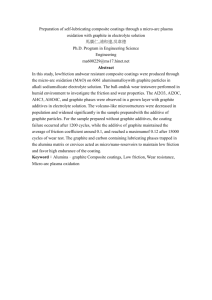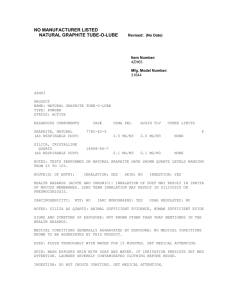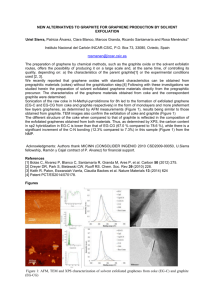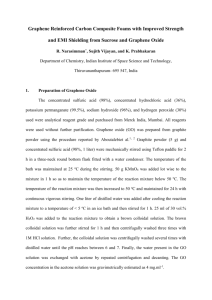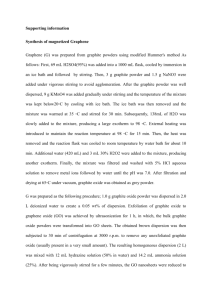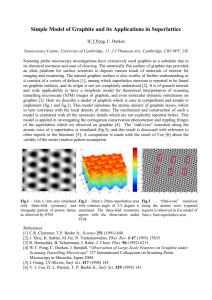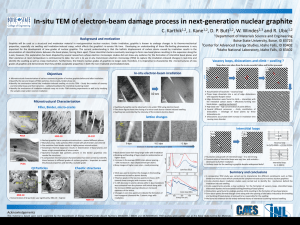Prof. MI Heggie
advertisement
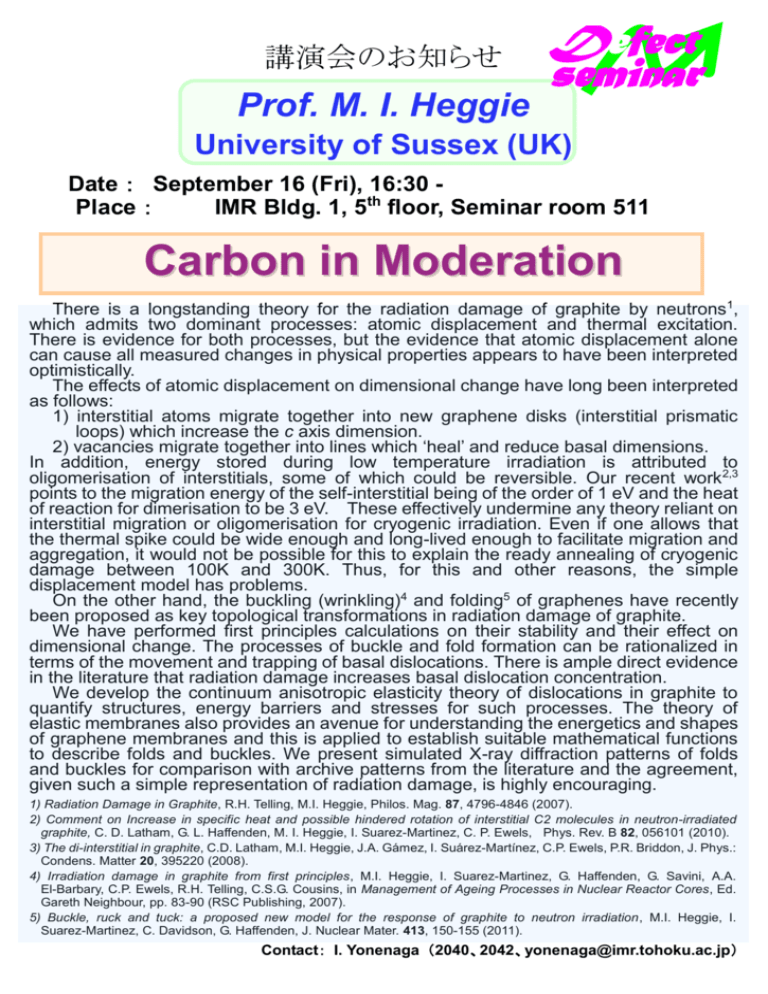
講演会のお知らせ Prof. M. I. Heggie Defect seminar University of Sussex (UK) Date: September 16 (Fri), 16:30 Place: IMR Bldg. 1, 5th floor, Seminar room 511 Carbon in Moderation There is a longstanding theory for the radiation damage of graphite by neutrons1, which admits two dominant processes: atomic displacement and thermal excitation. There is evidence for both processes, but the evidence that atomic displacement alone can cause all measured changes in physical properties appears to have been interpreted optimistically. The effects of atomic displacement on dimensional change have long been interpreted as follows: 1) interstitial atoms migrate together into new graphene disks (interstitial prismatic loops) which increase the c axis dimension. 2) vacancies migrate together into lines which ‘heal’ and reduce basal dimensions. In addition, energy stored during low temperature irradiation is attributed to oligomerisation of interstitials, some of which could be reversible. Our recent work2,3 points to the migration energy of the self-interstitial being of the order of 1 eV and the heat of reaction for dimerisation to be 3 eV. These effectively undermine any theory reliant on interstitial migration or oligomerisation for cryogenic irradiation. Even if one allows that the thermal spike could be wide enough and long-lived enough to facilitate migration and aggregation, it would not be possible for this to explain the ready annealing of cryogenic damage between 100K and 300K. Thus, for this and other reasons, the simple displacement model has problems. On the other hand, the buckling (wrinkling)4 and folding5 of graphenes have recently been proposed as key topological transformations in radiation damage of graphite. We have performed first principles calculations on their stability and their effect on dimensional change. The processes of buckle and fold formation can be rationalized in terms of the movement and trapping of basal dislocations. There is ample direct evidence in the literature that radiation damage increases basal dislocation concentration. We develop the continuum anisotropic elasticity theory of dislocations in graphite to quantify structures, energy barriers and stresses for such processes. The theory of elastic membranes also provides an avenue for understanding the energetics and shapes of graphene membranes and this is applied to establish suitable mathematical functions to describe folds and buckles. We present simulated X-ray diffraction patterns of folds and buckles for comparison with archive patterns from the literature and the agreement, given such a simple representation of radiation damage, is highly encouraging. 1) Radiation Damage in Graphite, R.H. Telling, M.I. Heggie, Philos. Mag. 87, 4796-4846 (2007). 2) Comment on Increase in specific heat and possible hindered rotation of interstitial C2 molecules in neutron-irradiated graphite, C. D. Latham, G. L. Haffenden, M. I. Heggie, I. Suarez-Martinez, C. P. Ewels, Phys. Rev. B 82, 056101 (2010). 3) The di-interstitial in graphite, C.D. Latham, M.I. Heggie, J.A. Gámez, I. Suárez-Martínez, C.P. Ewels, P.R. Briddon, J. Phys.: Condens. Matter 20, 395220 (2008). 4) Irradiation damage in graphite from first principles, M.I. Heggie, I. Suarez-Martinez, G. Haffenden, G. Savini, A.A. El-Barbary, C.P. Ewels, R.H. Telling, C.S.G. Cousins, in Management of Ageing Processes in Nuclear Reactor Cores, Ed. Gareth Neighbour, pp. 83-90 (RSC Publishing, 2007). 5) Buckle, ruck and tuck: a proposed new model for the response of graphite to neutron irradiation, M.I. Heggie, I. Suarez-Martinez, C. Davidson, G. Haffenden, J. Nuclear Mater. 413, 150-155 (2011). Contact: I. Yonenaga (2040、2042、yonenaga@imr.tohoku.ac.jp)

